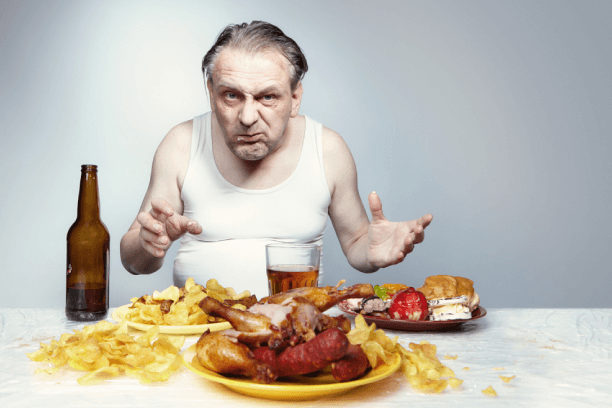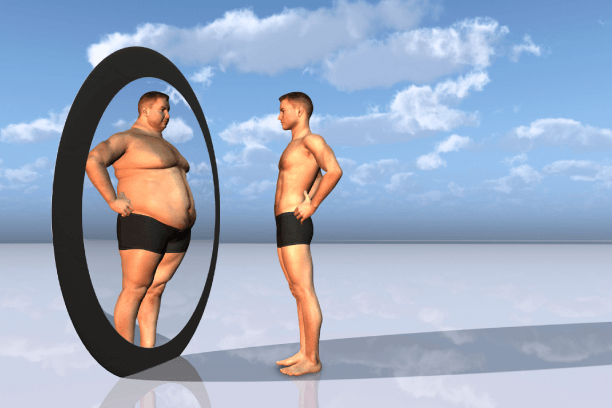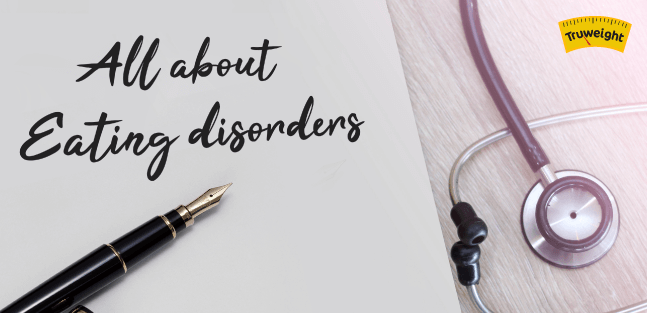Disease, Food & Nutrition, Health
What Are The Types Of Eating disorders & It’s Impact On Body Weight
Many people don’t regard eating disorders as actual problems but the reality is somewhat different.
The eating disorder is actually a mental condition and quite serious. It is not just a method to lose weight, or going on a diet but actually more than that.
Table of Contents
- What is an eating disorder?
- The causes responsible for eating disorder
- 6 Restrictive Food Intake Disorder
- Other types of eating disorders
- The Relation between sports and eating disorders
- What are the effects of eating disorders?
- Treatment for Eating Disorders
It affects people physically, psychologically as well as socially. In some cases, it can even become life-threatening.
What is an eating disorder?
Eating disorder is basically a condition in which a person expresses through abnormal eating habits. It begins with an obsession with body weight, food, or the shape of the body and goes on until one starts restricting the food intake.
This can result in serious health effects. In extreme cases, it can even lead to death. Eating disorders in people show a variety of symptoms. In most cases, the symptoms are the restriction on food, food binge, vomiting, or over-exercising.
While eating disorder is not associated with a particular group of people and can actually happen to anyone of any gender and at any age, it is more common among teenagers and young women.
In a study, it has been found that around 13% of adolescents may experience a certain type of disorder by the time they reach 20.
What are the causes responsible for eating disorder?
The eating disorder can take place because of a variety of reasons. One of the reasons is hereditary. Another reason for this disorder is a personality trait of an individual. Neurotics, perfectionism, impulsivity are other reasons that can be responsible for developing this disorder.
Other reasons for people to develop this is pressure from the society. Often we see people want to get thin or an ideal body shape which makes them inculcate such habits.
This societal pressure of getting thin is prevalent in many parts of the world. This fear of not getting cultural acceptance among peers often lead to eating disorders among teenagers. Most eating disorders take place in people who are adolescents. They are already going through an emotional and physical change and along with that they also have to feel the peer pressure.
During puberty, the teenagers are sensitive about their freedom of space and they might feel it is going out of their control. This is the same thing they feel about their body. Especially in the case of girls, it affects them more than boys.
It is normal to gain weight for them during puberty. Girls do not accept this easily and fear the changes their body is going through. They try to get rid of it and as a result, they adopt these purge methods. Apart from this, eating disorders are also found among those who are depressed or anxious.
They also have mental health-related problems, for example, obsessive-compulsive disorder (OCD). The type of environment at home can also be responsible for eating disorders.
Here are some common types of eating disorders:
1. Anorexia Nervosa
This disorder is a well-known eating disorder. Anorexia Nervosa is generally found in teenagers and it specifically affects women rather than men.
Individuals with this disorder consider themselves overweight even if actually they are underweight. People with this disorder closely watch their weight, restrict themselves from eating a certain type of food, and carefully count the calories they are in taking in.
Some common symptoms for this disorder are-
- Being underweight is one of the first symptoms of this disorder.
- Restrictions on the food they eat
- Fear of gaining weight even though they are already underweight
- Self-esteem totally built upon the weight or the body shape they have
- Living in denial that they are underweight
Obsessive Compulsive symptoms are also found. For example, many people with this disorder are occupied with thoughts about food, a collection of recipes, or even hoarding food.
They also find it difficult to eat in the public domain and have a strong urge to control the environment they are in.
The disorder is categorized into two types-
- Binge eaters and
- Restrictive type
Individuals those who are restrictive type tend to lose weight through dieting, fasting or immense exercising.
While those who are binge eaters tend to eat large portions of food or the exact opposite. In such a case, people tend to take out what they just had through vomiting, intaking laxatives, diuretics or doing immense physical exercise.

Anorexia Nervosa is quite harmful to the body. After a passage of time, people with this condition may see changes in their body such as thinning of the bones, infertility, weak hair, brittle nails, and unusual growth of fine hair on their body. In extreme cases, it can even lead to heart, brain, multi-organ failure or even death.
2. Bulimia Nervosa
This is also a commonly known disorder. Similar to anorexia, bulimia nervosa takes place in teenagers and starts developing in adolescence. It happens to affect more men than women.
Individuals who have this disorder tend to eat frequently and in unbelievably large portions within short gaps.
Each session of eating usually ends when the person is painfully full. Also, while they are eating, they feel that they cannot stop or control the number of portions they are eating.
Binge eating can take place with any kind of food but usually, it happens with the food item they tend to normally avoid.
After eating, they purge in order to relieve themselves from a large number of calories they just in took. This can be done using methods like- vomiting, fasting, diuretics, enemas, and exercising vigorously.
Symptoms are quite similar to the Bing eating type anorexia nervosa. But in bulimia nervosa, people tend to weigh normal rather than underweight when compared to their counterparts.
Common symptoms associated with bulimia nervosa are-
- Recurring episodes of binge-eating without being able to control what they eat.
- Inappropriate purging methods such as- vomiting in order to prevent the body from gaining weight.
- Body weight and body shape influencing the self-esteem of a person.
- Fear of gaining while a person weighs normal.
There are many side effects of this disorder such as- inflamed or a sore throat,
swelling in the salivary glands, tooth enamel getting worn out, tooth decay, acid reflux, irritation sensation in the gut, dehydration, and hormone disbalance. In extreme cases, it can also cause an imbalance in the electrolytes of the body such as sodium, potassium, calcium. It can also cause a stroke or heart attack.
3. Binge Eating Disorder
Like other disorders, binge eating disorder also starts developing in the adolescence although it can also happen later in life. Symptoms of this disorder are quite similar to the symptoms of a binge-eating type of anorexia nervosa and bulimia nervosa. They tend to eat unexceptionally large portions
of food in a small time and face the same uncontrollable feeling on the binge eating.
But in binge eating disorder, people don’t purge in order to get out the food out of their systems. They don’t compensate for the calories they just in took.
Some common types of symptoms found in this type of disorder are-
- Eating unexceptionally large portions of food in secrecy until full even without the need to eat.
- Lack of control on binge eating
- Distress feeling associated with it such as shame or guilt.
- They don’t do the calorie count and thus do not indulge themselves in the purging methods such as- vomiting, fasting, using laxatives etc.

Individuals who have this type of disorder are usually obese or overweight. This increases the chances of facing complications such as- heart diseases, stroke, or diabetes.
4. Pica
It is a type of disorder in which cravings are related to non-edible substances such as- oil, soil, chalk, soap, dirt, pebbles, detergent, cornstarch, ice, hair or cloth. Pica can happen to children, adolescents or adults. However, it is mostly found in children, during pregnancy, or individuals with the mental disability.
People having pica disorder are prone to getting poisoning, infections, and nutrition deficiencies. The consequences depend upon the substances ingested.
5. Rumination Disorder
It is a type of disorder in which a person brings back the food they have just chewed and swallowed. They re-chew it and then re-swallow it or spit it. It takes place within a span of 30 minutes of eating a meal. This is not a medical condition and actually deliberately done.
This type of disorder can happen at an infant age, childhood or even during adolescence. It usually disappears on its own in case of infants but children and adults usually need therapy in order to get rid of this disorder.
If the condition is not treated in infants on time, it can lead to severe nutrition deficiency and weight loss. However, adults can control the food portions they eat in the public domain. It can lead to weight loss and getting underweight.
6 Restrictive Food Intake Disorder
This disorder usually develops at an infant age or early childhood but can continue until adulthood. It is commonly found among both- men and women.
People with restrictive food intake disorder usually develop this due to no interest in eating certain kind of food or problems with smell, taste, textures, temperatures of food items. Symptoms associated with this disorder are-
- Restricting food intake which prevents the person from getting enough nutrition value
- Problems with eating habits. This results in a problem of eating in a social group.
- Being underweight or loss of weight
- Nutrition deficiency. Dependence on tube feedings or medicinal supplements
It is important to understand that this disorder should not be treated as acceptable behavior. It usually begins with choosiness for food items as a toddler or lower than normal intake of food among adults. Also, it does not happen due to lack of availability of food, religious reasons or some cultural practices.
Other types of eating disorders
There are a few other lesser known eating disorders as well. They are classified in three categories.
Purging Disorder
In this type of disorder, people use purging methods like vomiting, laxatives, diuretics, and many other things to keep the weight and body shape under control. Binge eating is not there in this type of disorder.
Night Eating Syndrome
In this type of syndrome, people have a habit of eating at night. They awake from sleep and eat in excess frequently. Another disorder on which research is going on is orthorexia. In orthorexia, people have an obsession with healthy eating habits.
This to such an extent that it can disrupt their daily lives. For example, a person with this disorder may eliminate a certain type of food items from their diet because it is unhealthy.
This can even lead to malnutrition in them, extreme weight loss, difficulty in eating in social groups or even emotional distress. Such people hardly think about losing weight. But their self-esteem, identity, is associated with how well they comply with self-planned diet.
The Relation between sports and eating disorders
There are a higher number of chances for sportsmen and dancers to develop eating disorders especially when they are adolescents. This is because they don’t want to accept the body changes or gain in weight.
A number of reasons are responsible for this. Coaches and family members can influence the teenagers from adopting severe methods.
Often we see coaches encouraging their students who are in sports like- gymnastics or ballet are asked to be as thin as possible. Runners or athletes also face this type of problem as they are asked to lose weight when actually they are in a natural phase to gain it.
What are the effects of eating disorders?
Eating disorders are serious medical conditions. It can also lead to serious health problems such as heart-related issues, kidney failures etc.
If the body weight of the person is 15 percent lesser than the average weight, then it becomes difficult for the body to keep organs and their functioning healthy. In some case, it can also be a cause of malnutrition and death.
Some of the common effects associated with eating disorders are-
- Anemia
- Swollen joints
- Brittle bones
- Inability to concentrate
- Loss of periods in girls
- Hair loss
- Drop in blood pressure, pulse rates, and breathing problems
Constant vomiting and deficiency of nutrients can cause-
- Stomach pain
- Serious damage to the stomach and kidney
- Tooth decay because of the stomach acids
- Loss of periods
- Loss of potassium from the body
Emotional pain is also associated with an eating disorder. Body weight is what a person thinks about day and night, it becomes difficult to focus on anything else. It can be difficult to constantly check your food intake, calories intake, stress about the type of food to eat, and an ideal shape of the body.
Eating in social groups can become problematic as one finds difficult to munch on snacks. They focus on exercising vigorously in order to achieve the desired body shape.
It also involves a lot of draining of the mental energy. This is because a person facing this disorder may invest their time and energy in constant planning about things like- things to eat, way to avoid food, binge eating, money for buying laxatives or other kinds of medications, reasons for going to the bathroom and so on.
Treatment for Eating Disorders
Eating disorders can be treated with the right type of help and constant support. With help, they can learn to eat in the right way and normally just like their family and friends.
Such disorders affect the body and mind equally. So medical help is indeed important for a person’s treatment and recovery.
Counseling is an important part of getting the disorder corrected. Parents and family also play a key role in supporting the person. They need to talk to them about their insecurities, acceptance of the body shape, genes and so on.
One should remember that it is a slow process. It takes time to be comfortable in their own skin and gain a healthy weight. The most important rule is to forgo the wrong methods and adapt to the healthy behavior.
Conclusion
The eating disorder is a mental disorder and it can seriously affect the individual physically as well as emotionally. There are certain myths associated with it such as it is a phase or just a conscious decision was taken by someone. However, this is not true.
Eating disorders can take a turmoil on a person’s health and need support and care from an expert and their loved ones. If someone finds out about these symptoms in anyone, they should immediately seek help from a doctor and emotionally support them.
If someone has recognized these symptoms themselves and are facing this problem, they should try to talk about it with a person they are comfortable with, such as friends, teachers, school doctors or anyone else. They will help you out and support you in finding a way out.
Youth should be taught about being comfortable in their own skin and accept the natural changes occurring in their body during puberty. Accept who are and be happy about it.
Talk to our expert Possible Nutritionist today if you suffer from gluten intolerance.
They will help you sail through it like breeze. The first consultation is on us. Click here to avail.
